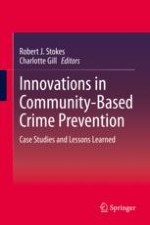2020 | OriginalPaper | Buchkapitel
4. Improving Community Governance to Reduce Crime: The Case of the Philadelphia’s Mantua BCJI Program
verfasst von : Robert J. Stokes
Erschienen in: Innovations in Community-Based Crime Prevention
Aktivieren Sie unsere intelligente Suche, um passende Fachinhalte oder Patente zu finden.
Wählen Sie Textabschnitte aus um mit Künstlicher Intelligenz passenden Patente zu finden. powered by
Markieren Sie Textabschnitte, um KI-gestützt weitere passende Inhalte zu finden. powered by
